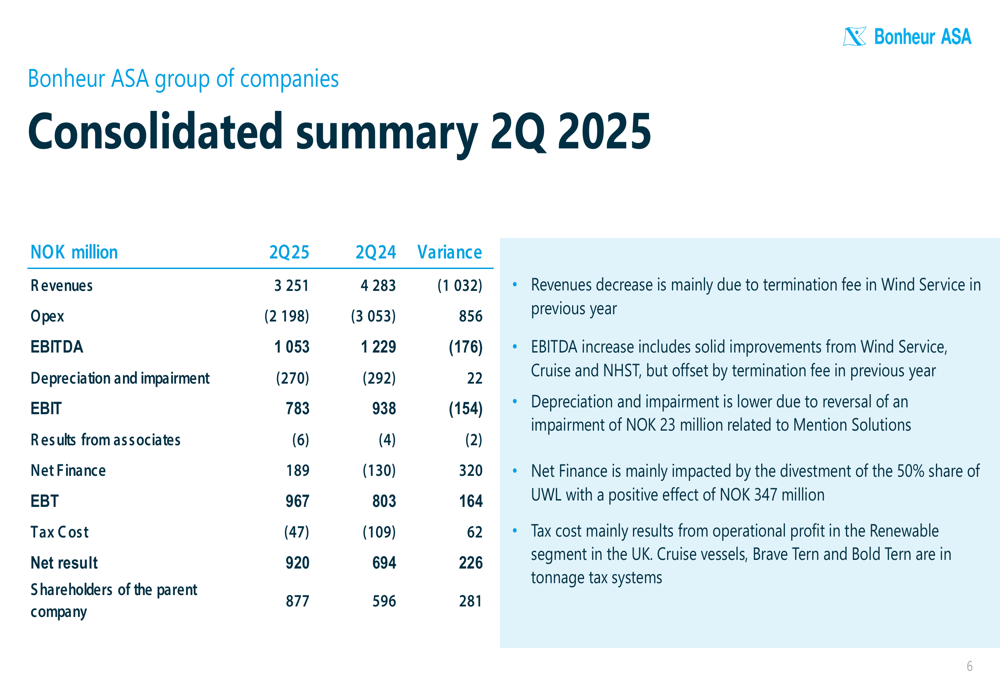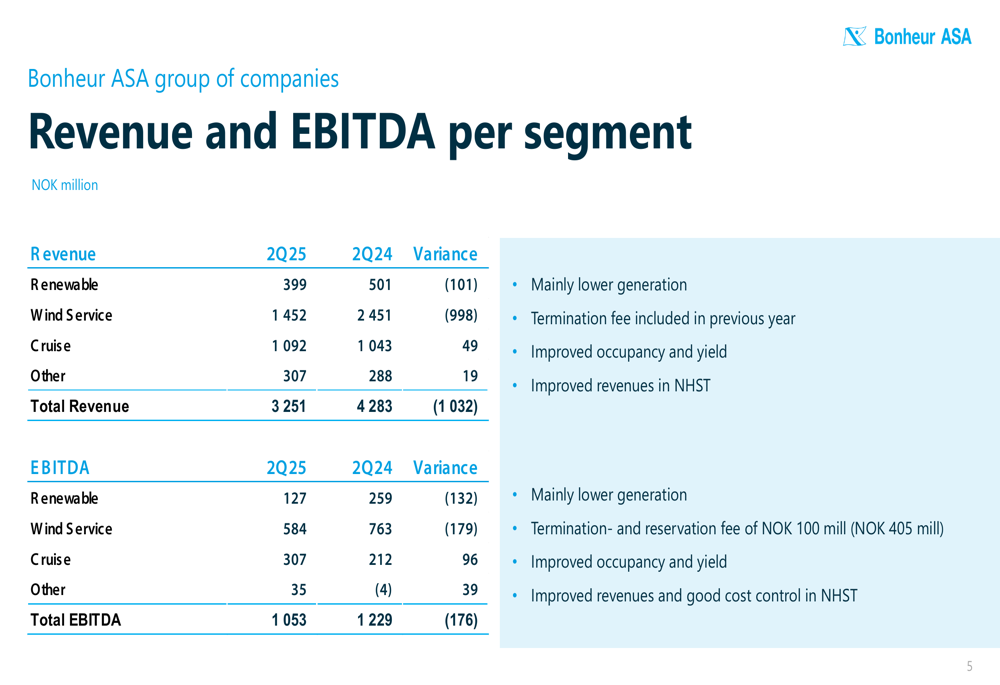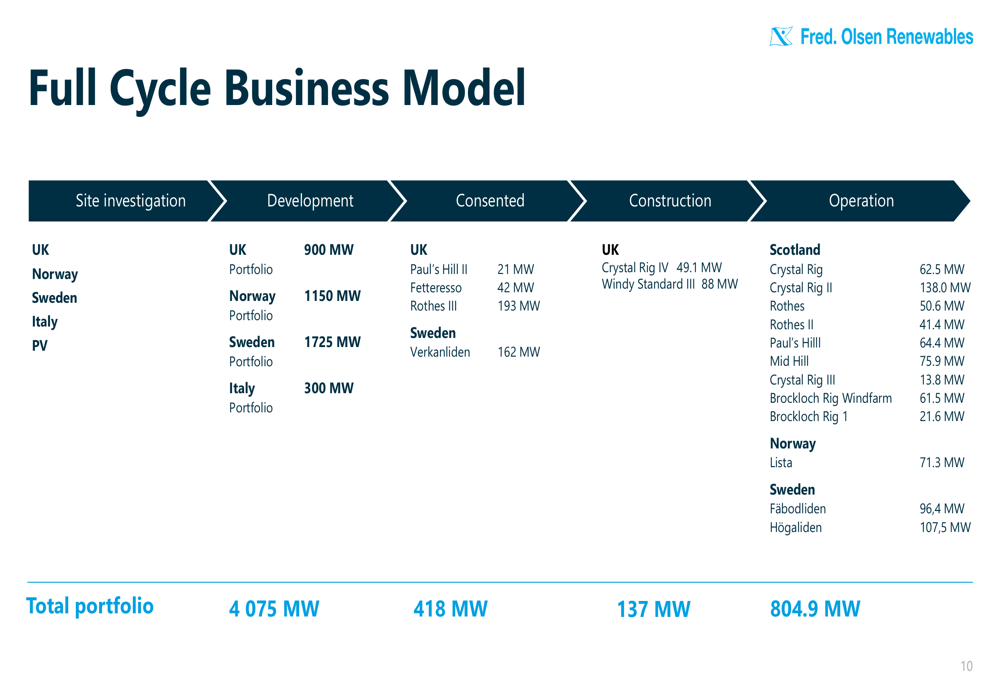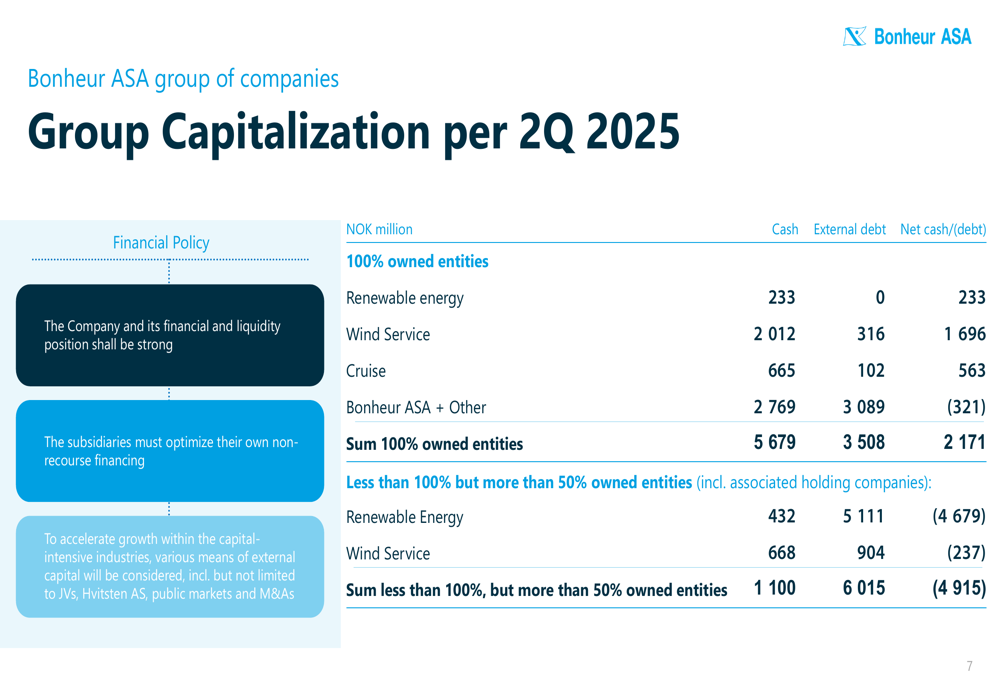Street Calls of the Week
Introduction & Market Context
Bonheur ASA (OB:BONHR) presented its second quarter 2025 results on July 10, showing a mixed performance across its business segments amid challenging market conditions. The Norwegian investment company, which operates in renewable energy, wind service, cruise, and other sectors, reported a 24% year-over-year revenue decline but a 33% increase in net profit, largely driven by a significant divestment.
The company’s stock has shown resilience in recent trading, with shares closing at NOK 231 on July 9, up 0.65% and well above its 52-week low of NOK 205.5, though still below its high of NOK 287.5. This performance comes against a backdrop of volatile energy markets and ongoing geopolitical challenges affecting various segments.
Quarterly Performance Highlights
Bonheur reported total revenue of NOK 3,251 million for Q2 2025, down from NOK 4,283 million in Q2 2024, representing a 24% decrease. However, the company’s net result improved to NOK 920 million, up from NOK 694 million in the same period last year, marking a 33% increase.
As shown in the following consolidated summary, EBITDA declined to NOK 1,053 million from NOK 1,229 million in Q2 2024, while EBIT fell to NOK 783 million from NOK 938 million:

The improved net result was significantly influenced by the divestment of UWL, completed on April 30, which contributed a profit of EUR 29 million (NOK 347 million) reflected as financial income. This transaction, along with other financial items, helped net finance swing from negative NOK 130 million in Q2 2024 to positive NOK 189 million in Q2 2025.
Segment Analysis
The company’s performance varied significantly across its four main business segments, with Cruise showing improvement while Renewable Energy and Wind Service faced challenges.
The following chart illustrates the revenue and EBITDA breakdown by segment, highlighting the year-over-year changes:

Renewable Energy: This segment reported an EBITDA of NOK 127 million, down from NOK 259 million in Q2 2024. The decline was primarily attributed to 20% lower generation compared to P50 estimates due to downtime and challenging weather conditions. Additionally, while power prices were 10% higher in the UK, they were 56% lower in Sweden, further impacting results.
Wind Service: EBITDA fell to NOK 584 million from NOK 763 million in Q2 2024. The segment achieved a utilization rate of 73%, affected by yard stays for Tern vessels. Despite these challenges, the backlog increased to EUR 357 million from EUR 325 million year-over-year.
Cruise: This segment was a bright spot, with EBITDA rising to NOK 307 million from NOK 212 million in Q2 2024. Occupancy improved to 79% from 77%, while net ticket income per passenger day increased to GBP 210 from GBP 196. Booking (NASDAQ:BKNG) numbers were up 11% compared to last year, indicating positive momentum.
Other Investments: This segment turned around from a negative EBITDA of NOK 4 million in Q2 2024 to a positive NOK 35 million in Q2 2025, primarily driven by improved performance at NHST.
The following chart shows the 12-month rolling trend of revenues and EBITDA by segment:

Strategic Initiatives
Despite challenging market conditions, Bonheur continues to advance strategic initiatives across its business segments, particularly in renewable energy and offshore wind.
In the Renewable Energy segment, Fred. Olsen Renewables is progressing with the construction of two windfarms: Crystal Rig IV (49.1 MW) and Windy Standard III (88 MW). The company’s full-cycle business model encompasses a total portfolio of 4,075 MW across various stages of development:

In offshore wind, Fred. Olsen Seawind achieved a significant milestone with the onshore consent award for its Muir Mhòr project in Scotland, a 1000 MW floating project developed in a 50/50 joint venture with Vattenfall. The project is positioned to be one of the "first mover" projects in Scotland for floating offshore wind.
The Codling Wind Park project in Ireland, a 50/50 joint venture with EDF (EPA:EDF), continues to progress through the consent application process. The project has already secured site exclusivity, grid access, and won a Contract for Difference (CfD) for 1300 MW in the ORESS 1 auction.
Financial Position
Bonheur maintains a strong financial position, with substantial cash reserves enabling continued investment in growth initiatives. The following chart details the group’s capitalization as of Q2 2025:

For 100% owned entities, the company reported cash of NOK 5,679 million against external debt of NOK 3,508 million, resulting in a net cash position of NOK 2,171 million. This aligns with the company’s financial policy of maintaining a strong financial and liquidity position.
The less than 100% but more than 50% owned entities reported cash of NOK 1,100 million against external debt of NOK 6,015 million, resulting in a net debt position of NOK 4,915 million. These entities primarily operate with non-recourse financing, in line with the company’s strategy of having subsidiaries optimize their own financing structures.
Outlook & Challenges
Looking ahead, Bonheur faces both opportunities and challenges across its business segments:
In Renewable Energy, the company continues to deal with challenging power price environments, particularly in Sweden where high wind periods coincide with low or negative prices, leading to curtailed production. However, the construction of new windfarms and development of the project pipeline provide growth opportunities.
The Wind Service segment operates in a tight vessel market with volatility on the demand side. While few new major T&I contract awards were secured in the first half of 2025, tender activity remains high for new projects, suggesting potential future opportunities.
The Cruise segment shows positive momentum with improved occupancy, yield, and booking numbers. The company has hedged 75% of its estimated bunker consumption for 2025, providing some protection against fuel price volatility.
In technology innovation, Fred. Olsen 1848 continues to progress with floating wind and floating solar solutions, with its BRUNEL Floating AS achieving certification milestones that provide technical de-risking for stakeholders.
Overall, while Bonheur faces near-term challenges in some segments, its strong financial position and strategic investments in growth areas position the company to capitalize on long-term opportunities in renewable energy and related sectors.
Full presentation:
This article was generated with the support of AI and reviewed by an editor. For more information see our T&C.
